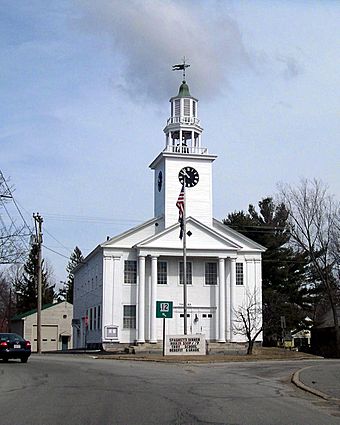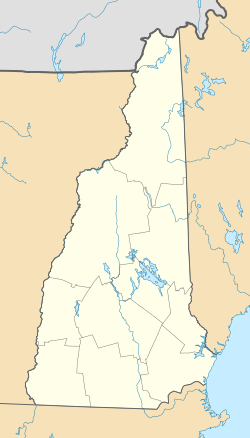Troy Village Historic District facts for kids
Quick facts for kids |
|
|
Troy Village Historic District
|
|

The Troy Meeting House
|
|
| Location | Encompassing the village center, mostly along NH 12, Troy, New Hampshire |
|---|---|
| Area | 177 acres (72 ha) |
| Architect | Forristall, Joseph M. |
| Architectural style | Federal, Greek Revival |
| NRHP reference No. | 02001500 |
| Added to NRHP | December 13, 2002 |
The Troy Village Historic District is a special area in Troy, New Hampshire. It's like a time capsule showing how the village looked and worked long ago. This district includes the old village center, mainly along New Hampshire Route 12. It was added to the National Register of Historic Places in 2002 because of its important history.
Contents
What Makes Troy Village Special?
The Troy Village Historic District covers a large area. It stretches along New Hampshire Route 12. The district goes north towards Marlborough Road and south to South Main Street. It also includes many side streets.
A Look at the Buildings
Most buildings in the district are homes. They are usually one or two stories tall. These houses are made of wood. They were built between the mid-1800s and the early 1900s. These buildings show the style of architecture from that time.
How Troy Village Grew
Troy village grew in this spot because of its rivers. Several small streams come together here. They form the South Branch of the Ashuelot River. This flowing water was perfect for powering mills.
Troy became its own town in 1815. It was formed from parts of Marlborough and Fitzwilliam. The town's main gathering spot is its common. This common was created when the town was first set up.
Busy Mills and New Businesses
The town's economy focused on mills. These mills were built on Mill Street and Monadnock Street. At first, they made products from wood. Later, in the second half of the 1800s, making cloth became very important. This was a time of great growth for Troy.
Business got even better when the railroad arrived. This happened in the late 1840s. The railroad also brought tourists to the area. People came to visit and enjoy the town.



